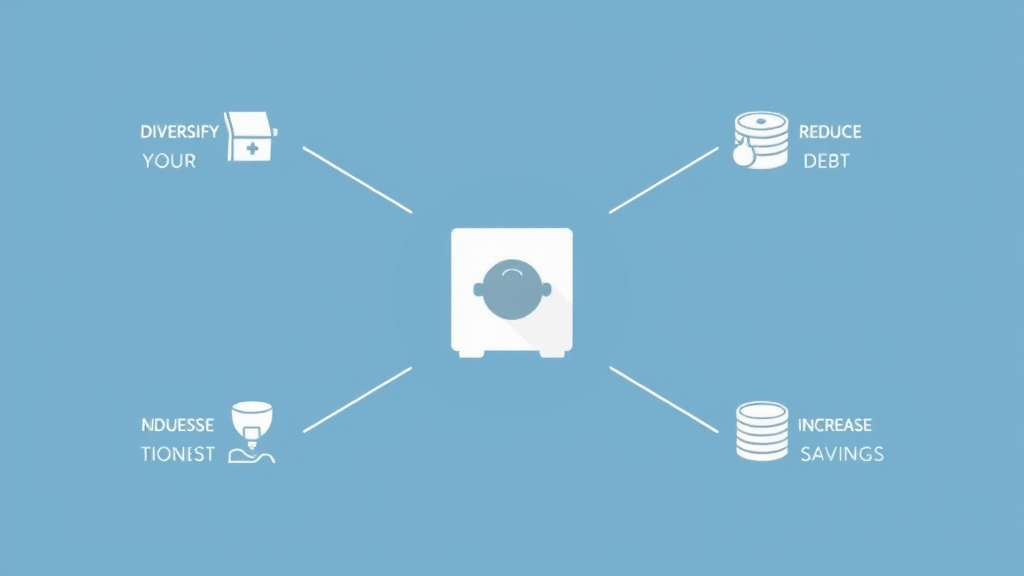Introduction to Inflation and Its Impact on Savings
Understanding Inflation: Causes and Effects
Inflation represents the rate at which the general level of prices for goods and services rises, eroding purchasing power. Consequently, as inflation increases, the real value of savings diminishes. This phenomenon compels individuals to seek alternative investment strategies. It is crucial to understand these dynamics. Inflation can significantly impact financial planning. Many people overlook this aspect. Therefote, awareness is essential for effective wealth management.
The Historical Context of Inflation and Savings
Historically, inflation has fluctuated significantly, impacting savings across various economic periods. For instance, during the 1970s, high inflation rates led to a decline in real savings. This trend forced individuals to reconsider their investment strategies. Many turned to assets like gold and real estate. Such shifts highlight the importance of diversification. Understanding these historical patterns is vital. They provide insights into future financial planning. Awareness can lead to better decision-making.
The Role of Cryptocurrency in Combating Inflation
How Cryptocurrencies Function as a Hedge Against Inflation
Cryptocurrencies offer a decentralized alternative to traditional currencies, making them appealing during inflationary periods. Their limited supply, particularly in the case of Bitcoin, helps preserve value. This characteristic contrasts sharply with fiat currencies, which can be printed in excess. Many investors view cryptocurrencies as a safeguard. They can mitigate the erosion of purchasing power. This perspective is gaining traction. Awareness of these benefits is crucial.
Case Studies: Successful Use of Crypto During Inflationary Periods
During hyperinflation in Venezuela, many citizens turned to Bitcoin as a means of preserving wealth. This shift allowed them to bypass the devaluation of the bolívar. Similarly, in Zimbabwe, cryptocurrencies provided a stable alternative amid economic turmoil. These case studies illustrate the practical applications of crypto. They highlight its role in safeguarding assets. Understanding these examples is essential. They demonstrate the resilience of digital currencies.
Diversifying Your Investment Portfolio
Importance of Asset Diversification
Asset diversification is crucial for mitigating risk in investment portfolios. By spreading investments across various asset classes, individuals can reduce exposure to market volatility. Common asset classes include stocks, bonds, real estate, and cryptocurrencies. This strategy enhances the potential for stable returns. It also protects against significant losses. Many investors overlook this principle. Understanding diversification is vital for financial health.
Integrating Cryptocurrencies into Your Portfolio
Integrating cryptocurrencies into an investment portfolio can enhance diversification. By allocating a portion of assets to digital currencies, he can potentially increase returns. This approach also mitigates risks associated with traditional investments. Many investors are now considering this strategy. Understanding market dynamics is essential. It can lead to informed decision-making. Awareness of volatility is crucial for success.
Stablecoins: A Safe Haven in Volatile Markets
What Are Stablecoins and How Do They Work?
Stablecoins are digital currencies designed to maintain a stable value, typically pegged to fiat currencies like the US dollar. This mechanism provides a safeguard against the volatility often seen in other cryptocurrencies. By offering price stability, they facilitate transactions and serve as a reliable store of value. Many investors find them appealing. Understanding their structure is essential. They can enhance liquidity in volatile markets.
Benefits and Risks of Using Stablecoins
Stablecoins offer several benefits, including price stability and ease of use in transactions. They can serve as a safe haven during market volatility. However, risks exist, such as regulatory scrutiny and potential loss of peg. He must consider these factors carefully. Understanding the underlying mechanisms is crucial. Awareness can lead to informed decisions. Many investors appreciate their utility.
Utilizing Decentralized Finance (DeFi) for Savings
Introduction to DeFi: Opportunities and Challenges
Decentralized Finance (DeFi) presents unique opportunities for savings through innovative financial products. By utilizing smart contracts, he can earn interest on his assets without intermediaries. This approach often yields higher returns compared to traditional savings accounts. However, challenges such as smart contract vulnerabilities and regulatory uncertainties exist. He must assess these risks carefully. Understanding the landscape is essential for effective participation. Many investors are exploring these options.
How to Earn Passive Income Through DeFi Platforms
Earning passive income through DeFi platforms involves lending or staking assets. By providing liquidity, he tin can receive interest or rewards. This method often yields higher returns than traditional savings . However, he should be aware of potential risks, such as market volatility. Understanding the terms and conditions is crucial. Many investors find this approach appealing. Awareness can lead to better financial decisions.
Strategies for Long-Term Wealth Preservation
Setting Financial Goals in an Inflationary Environment
Setting financial goals in an inflationary environment requires careful planning and adaptability. He should prioritize investments that historically outpace inflation, such as real estate and equities. Additionally, incorporating assets like commodities can provide a hedge against rising prices. Regularly reviewing and adjusting his portfolio is essential. This practice ensures alignment with changing economic conditions. Many investors overlook this step. Awareness of inflation’s impact is crucial for long-term success.
Regularly Reviewing and Adjusting Your Investment Strategy
Regularly reviewing and adjusting an investment strategy is vital for maintaining financial health. Market conditions can change rapidly, impacting asset performance. He should assess his portfolio at least quarterly. This practice allows for timely reallocation of resources. Additionally, understanding personal financial goals is essential. Many investors neglect this aspect. Awareness of market trends can enhance decision-making. Staying informed is crucial for long-term success.
Conclusion: Taking Action Against Inflation
Recap of Key Strategies Discussed
Key strategies discussed include diversifying investments and utilizing cryptocurrencies. He should also consider stablecoins for stability. Regular portfolio reviews are essential for adapting to market changes. Understanding inflation’s impact is crucial for effective planning. Many investors overlook these strategies. Awareness can lead to better financial outcomes. Taking action is necessary for long-term success.
Encouragement to Stay Informed and Adapt
Staying informed is essential for financial success. He must adapt to changing market conditions. Continuous education enhances decision-making capabilities. Many investors fail to keep up. Awareness of economic trends is crucial. It can lead to better strategies. Taking proactive steps is necessary.
